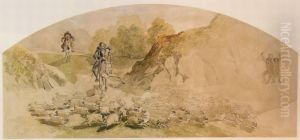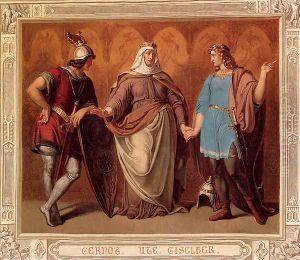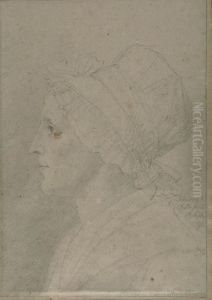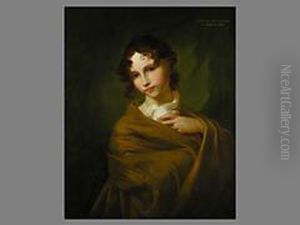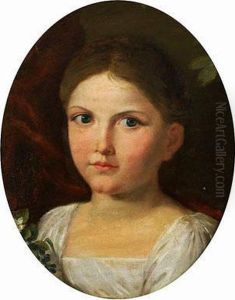Hans Veit Friedrich Schnorr von Carolsfeld Paintings
Hans Veit Friedrich Schnorr von Carolsfeld was a distinguished German painter and illustrator, born in 1794 into the prominent Schnorr von Carolsfeld family of artists. His father, Johann Veit Schnorr, was a notable engraver and painter, ensuring that Hans Veit was immersed in an artistic environment from an early age. This familial background played a crucial role in shaping his career and artistic style. He embarked on his artistic education under the tutelage of his father before further honing his skills at the Vienna Academy of Fine Arts. His education continued in Rome, where he was significantly influenced by the works of the Italian Renaissance and the Nazarene movement, a group of German Romantic painters who aimed to revive honesty and spirituality in Christian art.
Throughout his career, Schnorr von Carolsfeld was known for his contributions to religious and historical painting, as well as his work as an illustrator. His art is characterized by its vivid detail, emotional depth, and adherence to traditional religious themes, often infused with a romantic sensibility that was typical of the Nazarene movement. One of his most notable works includes the series of frescoes in the Ludwigskirche in Munich, which depict scenes from the Old and New Testaments, showcasing his mastery in handling large-scale compositions and his deep commitment to religious subject matter.
Schnorr von Carolsfeld's influence extended beyond his paintings. As an illustrator, he contributed to various projects, including a renowned series of woodcuts for an edition of the Bible, which was widely celebrated for its expressive figures and narrative clarity. This work further cemented his status as a key figure in the German Romantic movement and a pivotal contributor to the development of 19th-century German art.
Despite his success, Schnorr von Carolsfeld remained closely connected to his roots in the Nazarene movement and continued to advocate for a revival of spiritual and historical themes in art throughout his life. He passed away in 1872, leaving behind a legacy that not only includes his significant contributions to painting and illustration but also his role in influencing subsequent generations of artists who sought to combine technical skill with deep spiritual and emotional expression.
